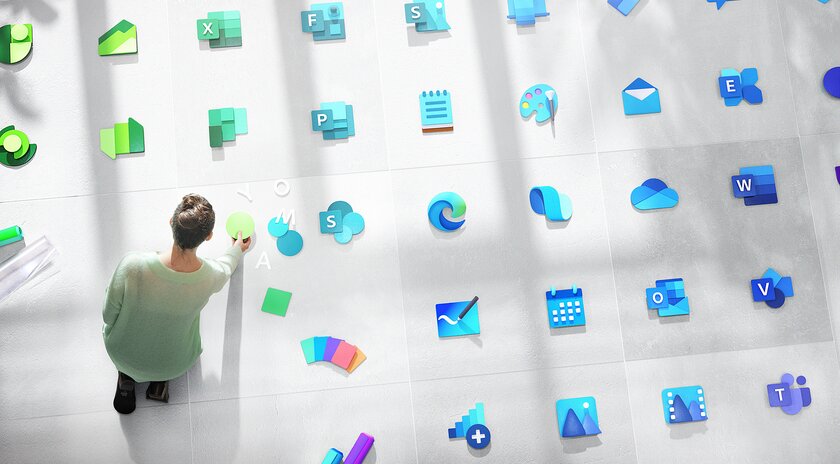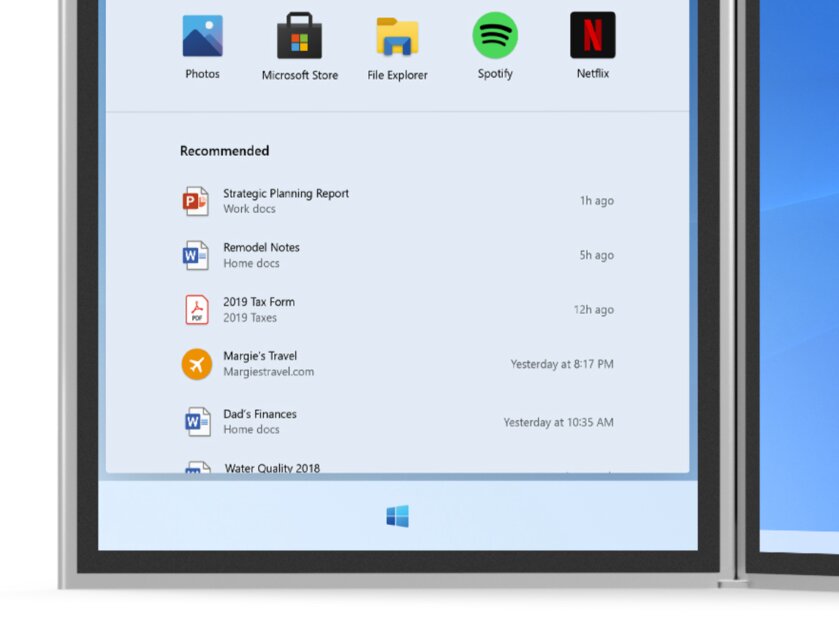- Microsoft изменила логотип Windows и дизайн иконок
- Microsoft изменила логотип Windows и дизайн иконок
- Microsoft Windows
- Windows 1.0/2.0
- 1985–2001
- Windows 3.0
- 1990–2001
- Windows 3.1x
- 1992–2001
- Windows NT 3.1
- 1993–2001
- Windows NT 3.5x
- 1994–2001
- Windows 95
- 1995–2001
- Windows NT 4.0
- 1996–2004
- Windows 98/98 SE
- 1998–2006
- Windows 2000
- 1999–2010
- Windows Millennium Edition
- 2000–2006
- Windows XP
- 2001–2014
- Windows Vista
- 2006–2017
- Windows 7
- 2009–2020 (Base version), 2009–2023 (Pro and Enterprise versions)
- Windows 8
- 2012–2016
- Windows 8.1
- 2013–present
- Windows 10
- 2015–present
- Windows 10X
- 2020–present
Microsoft изменила логотип Windows и дизайн иконок
О том, что Microsoft планирует редизайн Windows было известно давно. Зарубежные издания пустили слух еще год назад, однако конкретной информации в сети до сих пор не появлялось. Теперь же все стало ясно, ведь в официальном блоге компании было опубликовано соответствующее заявление. Первыми в очереди на переработку оказались иконки и логотип.

Выяснилось, что кардинальных изменений ждать не стоит — модернизация существующего дизайна Fluent Design будет проходить постепенно в рамках нескольких этапов, результаты первого из которых уже можно оценить. Что сразу бросается в глаза, пиктограммы стали значительно ярче и проще. Как говорится в официальном послании Microsoft, дизайнеры постарались подогнать иконки под современные стандарты, сохраняя их узнаваемость для постоянных пользователей.
Новый же логотип, ранее уже замеченный в Windows 10X, версии системы для устройств с двойным экраном, не так сильно отличается от предыдущего. По сути, Microsoft лишь изменили цвет, добавив градиент от темно-синего до ярко-голубого, в то время как ранее использовавшееся лого было плоским.
Как сообщается, измененные логотип, иконки и другие еще не анонсированные нововведения порадуют пользователей уже в 2020 году
Microsoft изменила логотип Windows и дизайн иконок
О том, что Microsoft планирует редизайн Windows было известно давно. Зарубежные издания пустили слух еще год назад, однако конкретной информации в сети до сих пор не появлялось. Теперь же все стало ясно, ведь в официальном блоге компании было опубликовано соответствующее заявление. Первыми в очереди на переработку оказались иконки и логотип.

Выяснилось, что кардинальных изменений ждать не стоит — модернизация существующего дизайна Fluent Design будет проходить постепенно в рамках нескольких этапов, результаты первого из которых уже можно оценить. Что сразу бросается в глаза, пиктограммы стали значительно ярче и проще. Как говорится в официальном послании Microsoft, дизайнеры постарались подогнать иконки под современные стандарты, сохраняя их узнаваемость для постоянных пользователей.
Новый же логотип, ранее уже замеченный в Windows 10X, версии системы для устройств с двойным экраном, не так сильно отличается от предыдущего. По сути, Microsoft лишь изменили цвет, добавив градиент от темно-синего до ярко-голубого, в то время как ранее использовавшееся лого было плоским.
Как сообщается, измененные логотип, иконки и другие еще не анонсированные нововведения порадуют пользователей уже в 2020 году
Microsoft Windows
This page is about Microsoft Windows, the desktop-oriented operating system for computers. For other Microsoft Windows branded products and brands, see Microsoft Windows (disambiguation).
For other related logos and images, see:
|
|
Microsoft overhauled their logo again to fit in with the new Metro design language on Windows 8, which removes the green, yellow, and red colors to become all blue and a slightly modified Segoe font. This logo was unveiled on Windows 8 Consumer Preview released February 2012. Notable changes is that they Ditched the 3D, Aero And Flag Design And replaced it with a Window And a Flat Design, with perspective, design by Pentagram. Windows 8 was released on October 26, 2012.
Windows 8’s most notable new features are New Metro design, Touchscreen for the new tablet called «Surface», new full Start Menu (Start Screen), Apps, and instead of using the 3D task switcher, it used 2D at the right side of the screen. The original version is known to be the very shortest support version, but counting Windows 8.1 instead of this, Windows 95 and ME had the shortest support versions, due to their negative feedback and lack of usage because of some users staying on the previous version or upgrading as soon as the next version of Windows appeared.
Support ended on January 12, 2016. To regain support, users are recommended to upgrade to Windows 8.1 (which can be done in this version without install disc).
Windows 8.1
2013–present
After a year, Microsoft released Windows 8.1 in October 2013. This logo has an additional «.1» at the end and is also slightly less bold, giving a smoother feel. This logo was not officially used by Microsoft neither in advertising (where the default Windows logo was used) nor in the OS (where the Windows 8 logo was used), but it was used in some conferences.
Windows 8.1 was an update for Windows 8 with some improvements, Start button was reintroduced and some enhances to the Start Screen. Windows 8 and 8.1 were not commonly seen being used among Windows users, mainly due to the removed Start menu.
Mainstream support ended on January 9, 2018, and extended support will end on January 10, 2023.
Windows 10
2015–present
Microsoft officially unveiled the first beta version of Windows 10 on September 30, 2014. The text on the wordmark of the logo was unbolded and the logo itself was made a darker shade of blue. The last version of the operating system was released worldwide on July 29, 2015. Since then, Windows 10 releases new features update twice per year (except in 2016).
Windows 10’s new features are the ability to run Microsoft Store apps on the desktop, return of Start menu although Start screen mode option still remains, new versions of Microsoft Store-based apps, multiple desktops, a voice assistant: Cortana, and a new internet browser: Microsoft Edge. New updates for Windows 10 include Game Mode, Paint 3D and a new interface: Fluent Design which replacing Metro.
This might be the final version of Windows, because Microsoft says it is becoming ‘a service’.
For 2015 LTSB, Mainstream support ended on October 13, 2020, and extended support will end on October 14, 2025.
For 2016 LTSB, Mainstream support will end on October 12, 2021, and extended support will end on October 13, 2026.
For 2019 LTSC, Mainstream support will end on January 9, 2024, and extended support will end on January 9, 2029.
Windows 10X
2020–present
This logo is more rounded off, and has multiple colors, to fit with the new design. Microsoft is making a new version of Windows, aimed at dual-screen tablets. The development started around 2020. This version can run on laptops. As of now, the OS is still not released. But you can run the OS with the Microsoft Device Emulator Software. This version of Windows could run on ARM (Tablet) — based devices. You cannot install the OS onto regular PC’s. It either comes pre-installed, or you’ll need to flash it with NTFS-Pools. It also has a new start menu, taskbar, UI, and system. This OS will not replace Windows 10. This is another OS made for other devices.





